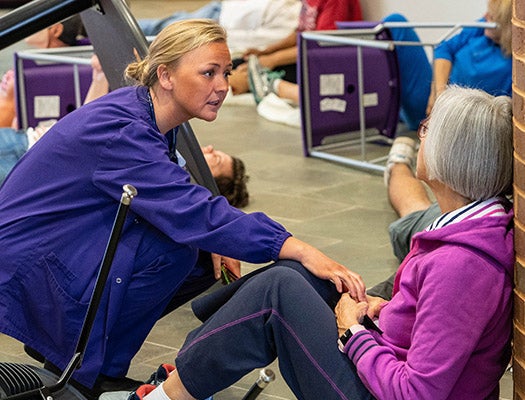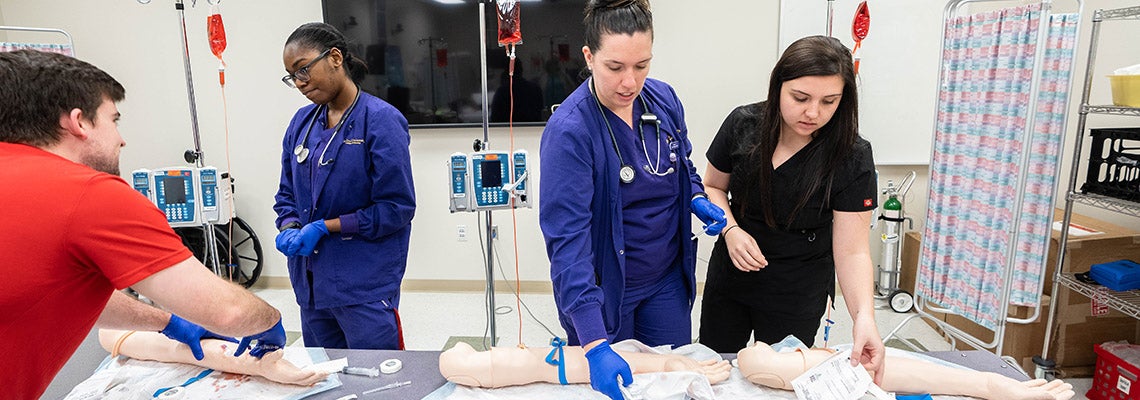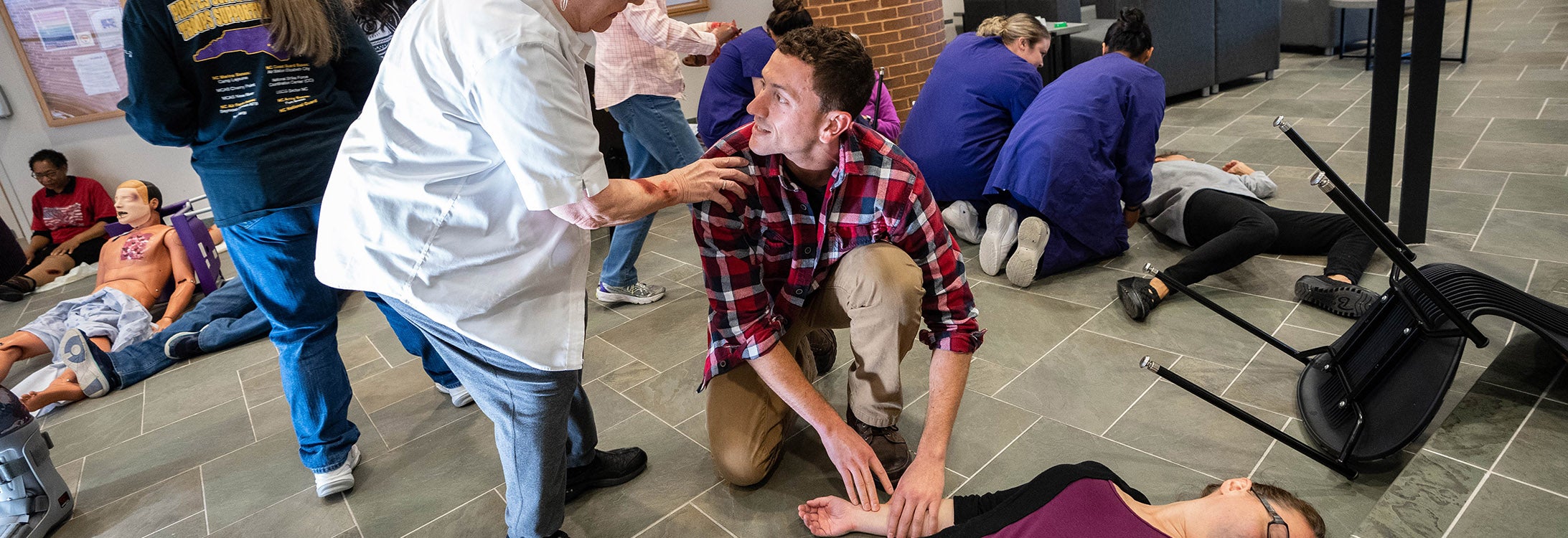DISASTER DRILL
Mass casualty simulation unites ECU nursing, medical students
Nursing and medical students rushed toward the yelling and moaning that echoed through the College of Nursing on Saturday morning. When they arrived at the frenzied scene of bodies and injured patients lying among overturned chairs and tables, they quickly split up to begin assessing each victim.

Nursing student Summer Long assesses a victim during the triage portion of the simulation.
After each of the victims had been assessed and assigned colored slips of paper based on the severity of their injuries, the students moved on to simulation labs where they practiced more skills they would need to know in a disaster situation.
The triage exercise, including actors wearing makeup mimicking wounds and other injuries, was a key part of the Interprofessional Triage Emergency and Management (I-TEAM) Day. The mass casualty simulation united Brody School of Medicine first- and second-year students and the College of Nursing’s Accelerated BSN students in learning how to create treatment teams, develop an action plan and deliver care as a team.
The exercise also allowed future doctors and nurses an opportunity to learn about each other’s practices and to teach each other new skills. In previous years, Brody held its own disaster simulation. This was the first time the College of Nursing participated in the event.
“I’ve been involved with interprofessional simulation for several years now, and we’ve found that it’s so important to get these students together, learning how to communicate with each other, learning what each other’s roles are and having a collaborative effort in patient care,” said Susan Kidd, director of the Accelerated Second Degree BSN option. “That ultimately means better outcomes for the patients.”
Throughout the morning, nursing and medical students were exposed to new skills as their groups worked through the triage exercise and seven other learning stations.
In the lab designated for hemorrhage management, nursing students taught medical students how to insert a peripheral IV, while medical students showed nurses how to place an intraosseous catheter, which allows delivery of fluids into the bone when an IV cannot be inserted.
“We’re teaching nurses to be basic practitioners, so doing something like an intraosseous catheter is not something we teach in nursing school,” Kidd said. “However, we have found that it is an advanced skill that some nurses are doing. So, (we’ve incorporated that) just to have them exposed to that and seeing that can be done.”
Kristen Cossaart, a nursing student who helped to organize the event, referenced Hurricane Florence as the most recent local event where health care providers experienced the types of situations this exercise was meant to mimic.
“I think it’s crucial to have this type of training,” Cossaart said. “Unfortunately, with the way our environment is in America, and whether from manmade or natural disaster, it’s going to happen, so it’s great if we can have a solid foundation as individuals to create that teamwork atmosphere. I hope this empowers people to be leaders if this ever happens.

Nursing students show medical students how to insert a peripheral IV in the hemmorrhage management portion of the disaster simulation.
